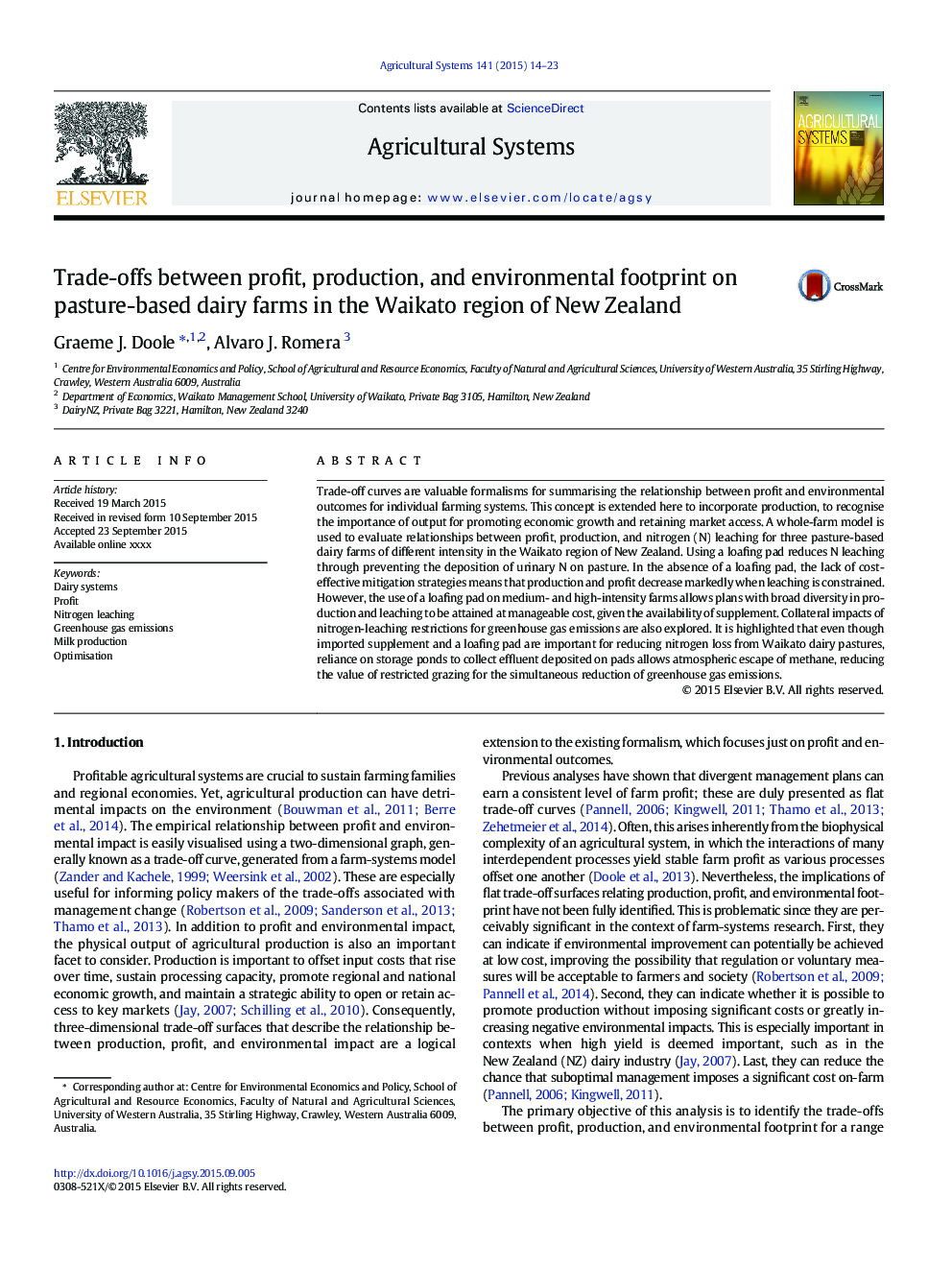| Article ID | Journal | Published Year | Pages | File Type |
|---|---|---|---|---|
| 6368418 | Agricultural Systems | 2015 | 10 Pages |
Abstract
Trade-off curves are valuable formalisms for summarising the relationship between profit and environmental outcomes for individual farming systems. This concept is extended here to incorporate production, to recognise the importance of output for promoting economic growth and retaining market access. A whole-farm model is used to evaluate relationships between profit, production, and nitrogen (N) leaching for three pasture-based dairy farms of different intensity in the Waikato region of New Zealand. Using a loafing pad reduces N leaching through preventing the deposition of urinary N on pasture. In the absence of a loafing pad, the lack of cost-effective mitigation strategies means that production and profit decrease markedly when leaching is constrained. However, the use of a loafing pad on medium- and high-intensity farms allows plans with broad diversity in production and leaching to be attained at manageable cost, given the availability of supplement. Collateral impacts of nitrogen-leaching restrictions for greenhouse gas emissions are also explored. It is highlighted that even though imported supplement and a loafing pad are important for reducing nitrogen loss from Waikato dairy pastures, reliance on storage ponds to collect effluent deposited on pads allows atmospheric escape of methane, reducing the value of restricted grazing for the simultaneous reduction of greenhouse gas emissions.
Related Topics
Life Sciences
Agricultural and Biological Sciences
Agricultural and Biological Sciences (General)
Authors
Graeme J. Doole, Alvaro J. Romera,
